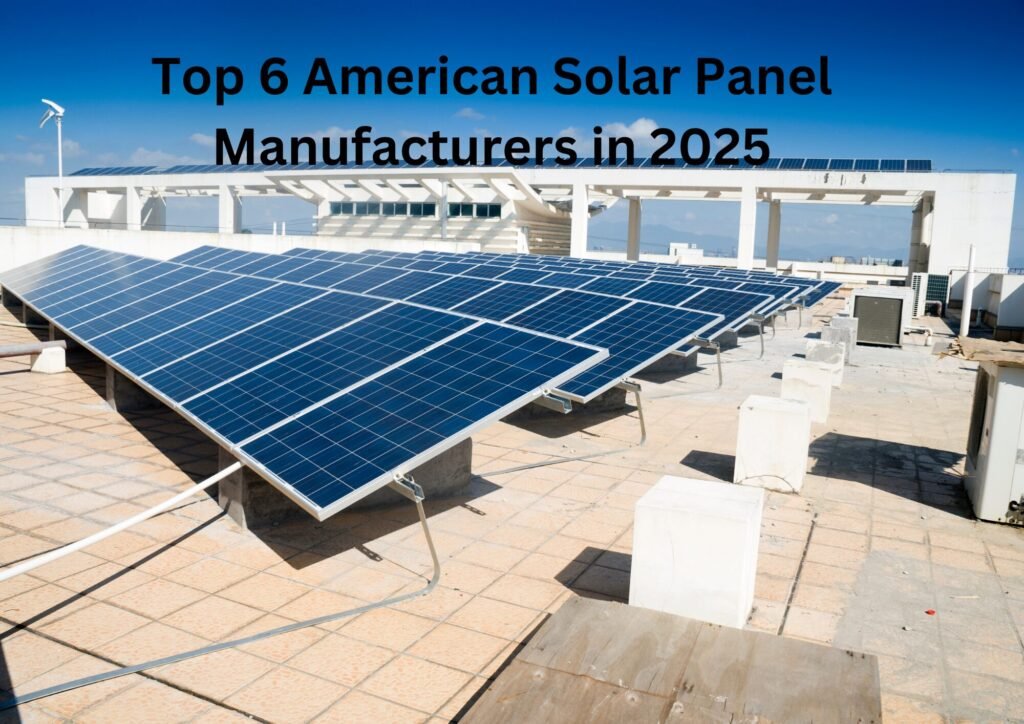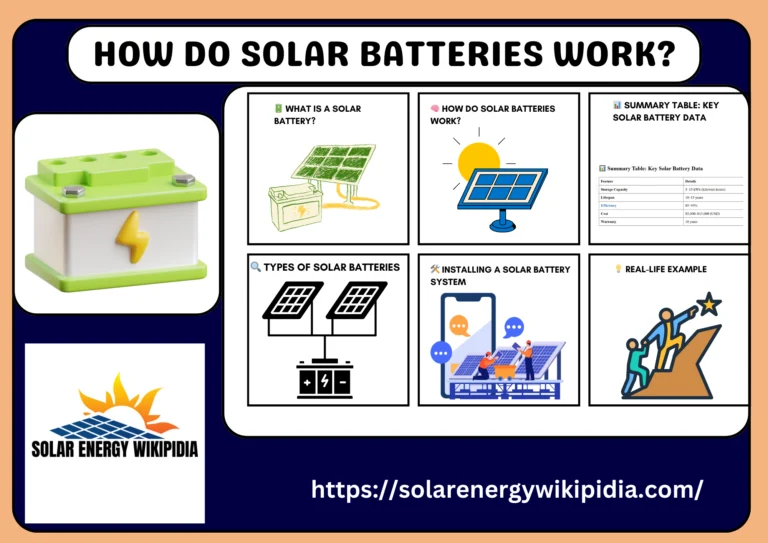
Top American solar panel manufacturers in 2025, their innovations, and how they are shaping the future of clean energy.
The solar industry in the United States has undergone a remarkable transformation. Once dominated by overseas manufacturers, American companies have surged back to prominence, fueled by innovative technology, supportive policies, and growing consumer demand for sustainable energy solutions. As someone who’s watched this industry evolve over the last decade, I’m continually amazed by how quickly American ingenuity has reclaimed its position in the solar market.
Today, we’ll explore the six most impressive American solar panel manufacturers that are lighting up the renewable energy landscape in 2025. These companies aren’t just creating jobs and boosting the economy—they’re actively reshaping our energy future with cutting-edge technology produced right here at home.
Table of Contents
At a Glance: America’s Solar Manufacturing Leaders
Before diving into the details, here’s a quick snapshot of the top American solar panel manufacturers making waves in 2025:
| Manufacturer | Headquarters | Founded | Notable Technology | Max Panel Efficiency |
| First Solar | Tempe, AZ | 1999 | Thin-film CdTe | 22.1% |
| Qcells | Dalton, GA | 1999 (Korea), 2019 (US) | Q.ANTUM DUO Z | 21.6% |
| Mission Solar | San Antonio, TX | 2013 | PERC Monocrystalline | 20.7% |
| Solaria | Fremont, CA | 2000 | PowerXT Pure Black | 20.5% |
| SunPower | San Jose, CA | 1985 | Maxeon Technology | 24.2% |
| Tesla/Panasonic | Buffalo, NY | 2016 | Solar Roof | 22.3% |
Now, let’s dig deeper into what makes each of these manufacturers special, and why they deserve a spot on this exclusive list.
First Solar: America’s Thin-Film Champion
The Technology Difference
First Solar stands apart from most manufacturers with its unique cadmium telluride (CdTe) thin-film technology. Unlike traditional silicon-based panels, First Solar’s thin-film approach requires less energy to produce and performs better in hot, humid conditions. Their Series 6 Plus modules have been absolute game-changers.
Environmental Impact and Manufacturing Scale

What genuinely impresses me about First Solar is their commitment to sustainability. Their manufacturing process uses 90% less water than conventional silicon panel production and has the lowest carbon footprint in the industry. With massive facilities in Ohio and a new $1.1 billion expansion announced last year, they’re proving that American solar manufacturing can compete globally while maintaining environmental standards.
“Our panels generate energy payback in less than six months—the fastest in the industry,” notes their Chief Sustainability Officer. “That means our panels are creating clean energy far longer than the energy it took to make them.”
Qcells: Korean Roots, American Growth
Georgia’s Solar Manufacturing Giant
While Qcells began as a Korean company, their commitment to American manufacturing has been nothing short of remarkable. Their Dalton, Georgia facility has become the largest solar panel manufacturing plant in the Western Hemisphere—an astonishing achievement that created over 4,000 American jobs.
The Technology Edge
With Qcells’ Q.ANTUM DUO Z technology, the zero-gap cell layout boosts panel efficiency and lowers internal electrical resistance. The result? Panels that perform exceptionally well even in less-than-ideal conditions, with incredibly low degradation rates over time.
Their recent partnership with Microsoft to power data centers with American-made solar panels demonstrates the growing trust in domestic manufacturing quality. As someone who follows supply chain issues closely, I find their vertically integrated approach particularly promising for long-term resilience.
Mission Solar: Texas-Sized Solar Innovation
American-Made from Start to Finish

Few companies embody “Made in America” quite like Mission Solar. Their San Antonio facility handles the entire manufacturing process—from cell production to final assembly—ensuring quality control at every step.
Technology Focus
Mission Solar specializes in high-efficiency PERC (Passivated Emitter Rear Cell) technology, which has become increasingly important for maximizing energy production in limited spaces. Their modules perform extraordinarily well in high-temperature environments—no surprise given their Texas roots!
What really stands out to me is their focus on residential and commercial applications, proving that American manufacturing can compete effectively in these crucial market segments. Their modules’ sleek all-black design has made them particularly popular among homeowners who care about aesthetics as much as performance.
Solaria: The Architectural Solar Specialists
Beyond Standard Solar
Solaria has carved out a unique niche by focusing on architectural solar solutions that blend seamlessly with building design. Their PowerXT Pure Black panels are among the most visually appealing in the industry—a factor that shouldn’t be underestimated when considering widespread adoption.
Power Density Innovation
The company’s patented cell cutting and ribbon-elimination technology creates panels with higher power density than conventional designs. This approach reduces electrical resistance and increases energy harvest per square foot—crucial for space-constrained installations.
I’ve spoken with several architects who swear by Solaria for projects where aesthetics matter. Their ability to create panels that homeowners and businesses actually want to showcase represents an important shift in how solar technology is perceived.
SunPower: The Efficiency Leader
Premium Performance
No list of American solar manufacturers would be complete without SunPower, the long-standing efficiency champion. Their proprietary Maxeon cell technology continues to set records for conversion efficiency, currently reaching an astounding 24.2% in commercial panels.
Reliability and Durability
SunPower panels consistently outperform competitors in durability tests, with the industry’s lowest degradation rates. Their unique copper backing system provides flexibility that prevents the micro-cracks that plague many conventional panels.
“We design our panels assuming they’ll face hurricane-force winds, hailstorms, and extreme temperature swings,” explains their Chief Technology Officer. “That’s why our warranty is the most comprehensive in the industry.”
After tracking performance data for years, I’m continually impressed by how SunPower panels maintain their output advantage over time, often producing significantly more energy over their lifetime despite higher initial costs.
Tesla/Panasonic: Reimagining Solar Integration
Beyond Traditional Panels
Tesla’s partnership with Panasonic at their Buffalo, NY “Gigafactory 2” represents one of the most ambitious attempts to reimagine solar technology. Their Solar Roof tiles replace traditional roofing materials entirely, seamlessly integrating power generation into architectural design.
Storage Integration
What makes the Tesla/Panasonic partnership particularly noteworthy is their holistic approach to energy, with tight integration between their solar products and the Powerwall storage system. This systems-based approach has profoundly impacted the broader industry.
While their manufacturing story has faced challenges and restructuring, their continued commitment to American production deserves recognition, especially as building-integrated photovoltaics gain momentum across the country.
The Future of American Solar Manufacturing

The resurgence of American solar manufacturing represents more than just business success—it’s about energy independence, job creation, and technological leadership. Recent federal incentives and tax credits have accelerated this trend, with several billion dollars flowing into new manufacturing facilities across the country.
As these six companies demonstrate, American solar manufacturing isn’t just competing—it’s leading in many areas, from efficiency to durability to design innovation. Their success proves that with the right combination of policy support, technological innovation, and consumer demand, American manufacturing can thrive even in highly competitive global industries.
Frequently Asked Questions: American Solar Panel Manufacturers in 2025
Are American-made solar panels more expensive than imported options?
While American-made panels typically cost 10-15% more initially, many consumers find the price difference is offset by higher reliability, better warranties, and stronger performance over time. Recent production scaling and tax incentives have also narrowed the price gap considerably since 2023.
How long do these American-made solar panels typically last?
Most premium American manufacturers offer 25-year performance warranties, but the actual lifespan often exceeds 30-35 years with gradual efficiency decline. First Solar and SunPower panels have demonstrated particularly impressive longevity in field testing.
Can these panels handle extreme weather conditions?
Absolutely! American manufacturers have prioritized durability, with most panels rated to withstand 1-inch hailstones, hurricane-force winds, heavy snow loads, and extreme temperature fluctuations. SunPower and Mission Solar panels perform especially well in high-heat environments.
Do American solar manufacturers offer recycling programs?
Yes, this has become increasingly important. First Solar sets the standard in the industry with a robust recycling program that recovers up to 90% of materials, while other manufacturers support responsible end-of-life management through strategic industry partnerships.
Which of these manufacturers is best for residential installation?
SunPower, Solaria, and Qcells have particularly strong residential offerings, though the “best” choice depends on your specific needs. SunPower excels in efficiency for space-constrained roofs, Solaria offers superior aesthetics, and Qcells provide excellent value with strong performance.






